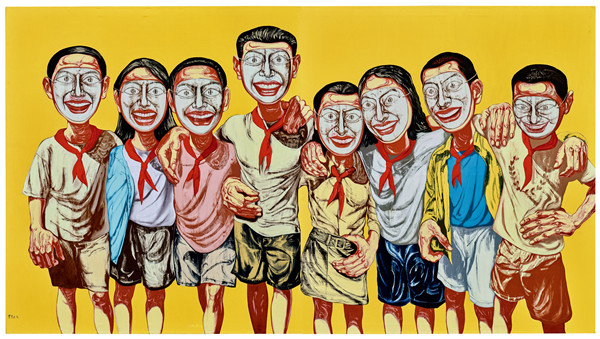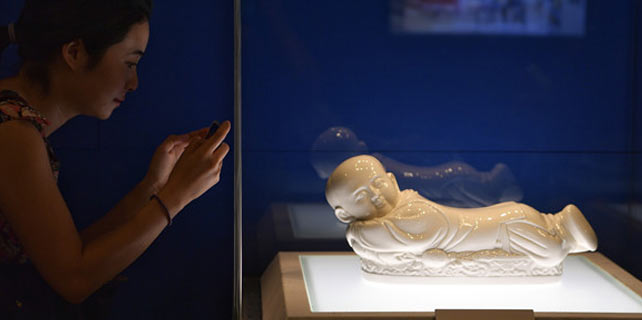Crossing the border to paint a picture of success
 |
|
A piece from Zeng Fanzhi's Mask Series 1996, which fetched HK$105 million ($13.4 million). [Photo provided to China Daily] |
On a firm footing
At a time when the performances of international auction industry heavyweights-Christie's, Sotheby's and Bonhams-don't seem to be creating much upheaval in the local market, Poly Auction Hong Kong made HK$1.24 million ($158,000) at the last spring auction, a rise of 17 percent since their last outing. Their highlight piece in spring last year, Wu Guanzhong's landscape, The Zhou Village, which masterfully combines Chinese and modern European sensibilities, sold for HK$236 million.
Wu's landscapes ruled Chinese auctions in Hong Kong this year, too. China Guardian, another auction house with mainland roots, sold one painting for HK$23 million, and its total haul by the end of this year's spring auctions was HK$326 million.
Poly and China Guardian are in the vanguard of mainland auction houses that have quickly found a firm footing in the crowded Hong Kong art market. Other names in the reckoning include Hanhai Auction, Council (Kuangshi), ChengXuan Auctions, HuaChen Auctions and Sungari International Auction.
Now, more medium-sized auction houses from the mainland and Hong Kong are opening in the city. For all of them to coexist in a small space, it is necessary to develop niche interests, and encourage clients to look beyond the familiar fare, according to Yee, who founded a local auction house several years ago but has since opened a consultancy that helps auction houses develop marketing strategies.
"I introduced Song Dynasty (960-1279) ceramics as a specialized category to the Hong Kong market in 2013," he said. "Now, we are working with different auction houses to introduce archaic Chinese bronzes and ancient Silk Road art."
"Silk Road" seems to be the dominant new phrase in Hong Kong's auction scene, inspired, at least in part, by President Xi Jinping's call to revive the ancient trade route that connected China with Central Asia and Europe. Nicholas Wilson, who heads the Chinese Ceramics and Works of Art Department at China Guardian Hong Kong, said his company hosted a symposium earlier this year "with the idea of promoting art that passed through the ancient Silk Road".
Among the merchandize that may have traveled down that road were Gandhara-style Buddha sculptures with Greco-Roman features that flourished in the first and second centuries in the regions that are now in Pakistan and Afghanistan.
At China Guardian's spring sales in May, Wilson sourced some rare specimens of Gand-hara art, including a second century panel carved in black schist that depicts the death and funeral of the Buddha.
"Getting younger buyers on board has been a bit of a challenge," he said. "But we've been trying to address that, educate newer buyers and show them that these pieces can be quite worthwhile even in a contemporary setting, and that they are really interesting historical pieces."
















